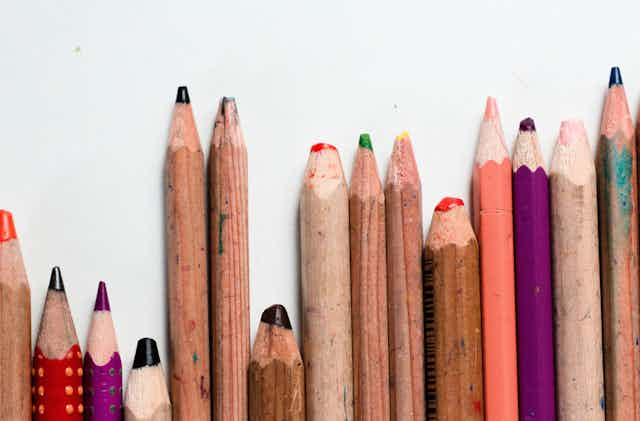A Senate inquiry has found Australian students need specific lessons in how to behave.
The inquiry, which has been looking at “increasing disruption in Australian school classrooms,” said education authorities should introduce a “behaviour curriculum”.
What else did the inquiry find? And what did it miss?
What is this inquiry?
The inquiry is being conducted by a Senate education committee, chaired by Liberal senator Matt O'Sullivan. It was set up in November 2022, following concerns about the levels of disruptive behaviour in Australian school classrooms. This has included evidence about both primary and secondary schools and government and non-government schools.
Australia has been slipping in the OECD’s “disciplinary climate index”. Australian classrooms currently among the world’s most disorderly. On top of this, the percentage of surveyed Australian teachers feeling unsafe at work has increased from 18.9% in 2019 to 24.5% in 2022.
There is obvious concern disruptive behaviour in schools is disadvantaging students and contributing to declining literacy and numeracy results in some international tests.
On Friday the committee released an interim report with nine main recommendations. A final report is due when federal parliament returns in February 2024.
What is disruptive behaviour?
The committee noted there is no “clear definition” of disruptive behaviour, but generally it varies from low-level disruptions to more challenging behaviours. Low-level disruptions (which are more common) can include:
talking unnecessarily and calling out without permission
being slow to start work or follow instructions
showing a lack of respect for staff and other students
not bringing the right equipment
using mobile phones when they are not allowed.
More challenging behaviours include destruction of property, verbal abuse or threats, physical assaults, leaving school grounds without permission, tantrums and substance abuse.
As one teacher told the committee:
[…] Staff have been hit. Staff have had furniture thrown at them; staff have had the windows next to their heads punched in. Staff are harassed. They have had their cars keyed. They have had their wallets stolen […].
Why are we seeing this increase?
While the committee notes the need for better data collection on this issue, Australian teachers are reporting an increase in disruptive student behaviour. They say this is making their jobs unreasonably stressful and prompting some to consider leaving the profession.
As one group representing the education support sector said:
People don’t want to keep working when they are always being hurt or are mentally exhausted, particularly when stress and mental health issues impacted other areas of their lives.
The committee heard there is likely to be a range of causes for these issues with disruptive behaviour influenced by student disability, socioeconomic factors and bullying or family trauma
Teachers are most concerned about low-level but frequent disruption, such as work avoidance. Although these behaviours are not dangerous, they occur so often they prevent teachers from teaching. Teachers report they don’t have the skills and training to tackle this behaviour. Meanwhile students are at risk of falling behind because their classes are constantly disrupted.
How are school’s coping?
So-called “exclusionary disciplinary strategies” (such as suspensions and expulsions) are still commonly used in response to disruptive student behaviour.
This is a problem for two reasons. Firstly, students who are not at school are not learning. Secondly, students who are suspended or expelled are more likely to come from a disadvantaged background.
As the South Australian Commissioner for Children and Young People told the committee:
Exclusionary practices disproportionately impact Aboriginal and Torres Strait Islander children and young people, children in out-of-[home] care, children living with disability and children experiencing poverty or homelessness.
What did the report recommend?
The report made nine recommendations, including:
introducing a specific “behaviour curriculum” for schools - this would explicitly teach behaviour to help students understand their school’s behavioural expectations and values
providing more practical behaviour management training in teaching degrees
moving away from open plan classrooms (which can be noisy) to classroom designs that minimise distractions
clearer pathways for students to access medical, psychological, social or behavioural services if they need it.
What did the report get right?
The report recognises the relationship between students’ behaviour and their academic achievement.
There is solid evidence that academic skills and behaviour are linked. This means students with low academic skills are more likely to exhibit disruptive behaviour and students who display disruptive behaviour may be more likely to fall behind academically.
This connection has been shown to be strongest in literacy. This is because students with low literacy skills are continuously asked to use skills they do not have.
So, any measures to handle and protect against disruptive behaviour are welcome.
This can also help shift responses from reactive, punitive approaches to more educative ones, that hopefully keep students in classrooms and learning, rather than being sent home.
This can also also help address the widening gap in achievement between advantaged and disadvantaged students.
Read more: Open-plan classrooms are trendy but there is little evidence to show they help students learn
What did the report miss?
The recommendations largely focus on improving training and professional development for teachers and on national actions related to school reform.
However, effective behaviour management in schools requires a supportive school system. This means there is enough funding, time and resources for planning, support teams, collaboration with parents and other professionals, and teacher coaching and mentoring.
So far, the committee is largely silent on this issue. But teachers cannot be expected to simply manage this on their own.
There are also concerns about the framing of this inquiry. In a dissenting report, the Greens argue:
This inquiry should have started with the question ‘why are these students coming into school today feeling distracted, unheard or frustrated?’.
If we are going to genuinely improve behaviour and disruptions at school, we do need to move from “fixing the blame” toward “fixing the problem”. This means not fixating on just teachers or students, but looking at the broad context of schools and their communities.

